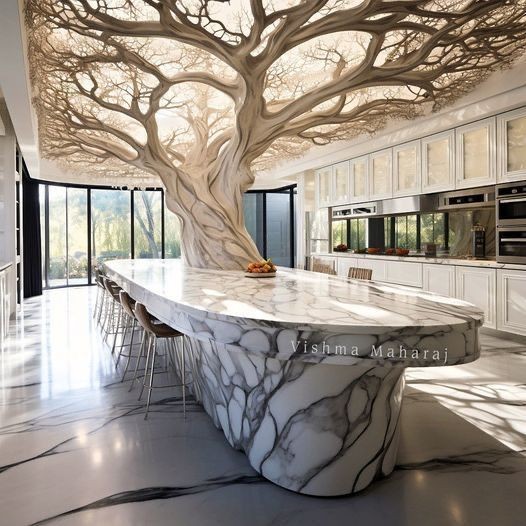**The Art and Science of Interior Design: Creating Spaces that Inspire**
Interior design is more than just arranging furniture and picking out paint colors; it’s an intricate blend of art, science, and psychology that transforms a space into a functional and aesthetically pleasing environment. Whether you're redecorating your living room, designing a new office, or creating a serene bedroom retreat, understanding the principles of interior design can make all the difference. This article delves into the key elements of interior design, offering insights and tips to help you create spaces that not only look great but also feel right.
### The Foundations of Interior Design
**1. Understanding Space**
Space is the foundation of interior design. It refers to the physical dimensions of the area you’re working with and how you plan to use it. Designers often start with a floor plan, which helps in visualizing how different elements will fit together. There are two types of space to consider:
- **Positive Space* This is the area occupied by furniture, decor, and other elements. Effective use of positive space ensures that rooms are functional and visually appealing.
- **Negative Space* This refers to the empty areas that help to balance the positive space. Proper use of negative space prevents rooms from feeling cluttered and overwhelming.
**2. Balance and Symmetry**
Balance in design is about creating visual equilibrium. There are three main types of balance:
- **Symmetrical Balance* This involves mirroring elements on either side of a central axis. It creates a formal and orderly feel. For example, placing identical lamps on either side of a sofa achieves symmetrical balance.
- **Asymmetrical Balance* This type of balance is achieved by arranging elements of different sizes and shapes in a way that still provides a sense of equilibrium. It tends to be more dynamic and informal.
- **Radial Balance* Elements radiate out from a central point, creating a sense of movement and energy. A round dining table with chairs arranged around it is an example of radial balance.
**3. Proportion and Scale**
Proportion refers to the relationship between objects in a space, while scale relates to the size of an object in relation to its surroundings. A well-proportioned room ensures that each element fits harmoniously within the space. For example, a large sectional sofa might be ideal for a spacious living room but overpowering in a small space.
**4. Harmony and Unity**
Harmony in design is about creating a cohesive look where all elements work together. Unity can be achieved through the use of color schemes, textures, and shapes that complement each other. It ensures that every component of the room feels like it belongs, contributing to an overall sense of peace and order.
**5. Rhythm and Flow**
Rhythm in interior design refers to the visual movement within a space. It can be achieved through repetition (repeating elements like colors or patterns), progression (gradually changing elements like light to dark shades), or transition (creating smooth shifts between different areas). A well-designed space will guide the eye smoothly from one area to another, enhancing the overall flow of the room.
### Key Principles in Interior Design
**1. Color Theory**
Color is one of the most powerful tools in interior design. It can influence mood, create illusions of space, and tie a room together. Understanding the color wheel and color harmony can help in choosing color schemes that evoke the desired ambiance. For instance:
- **Warm Colors* Reds, oranges, and yellows can make a space feel cozy and inviting.
- **Cool Colors* Blues, greens, and purples can create a calming and serene atmosphere.
- **Neutral Colors* Whites, grays, and beiges provide a versatile backdrop that can be paired with almost any accent color.
**2. Texture and Pattern**
Textures and patterns add depth and interest to a space. Mixing different textures—like smooth leather with soft velvet or rough brick with polished metal—creates visual and tactile contrast. Patterns, whether in rugs, curtains, or wallpaper, can enhance a room’s personality. However, it’s important to balance patterns to avoid overwhelming the space.
**3. Lighting**
Lighting is crucial in interior design as it affects both the functionality and mood of a space. There are three main types of lighting to consider:
- **Ambient Lighting* Provides overall illumination and ensures that spaces are adequately lit.
- **Task Lighting* Focuses on specific areas where activities take place, such as reading lamps or under-cabinet lights.
- **Accent Lighting* Highlights particular features or creates mood, such as spotlights on artwork or decorative lighting.
Effective lighting design involves layering these types to create a balanced and adaptable lighting scheme.
**4. Furniture Arrangement**
The arrangement of furniture impacts both the functionality and aesthetics of a space. It’s essential to consider the room’s purpose and how people will interact within it. For example:
- **Living Rooms* Arrange seating to facilitate conversation and comfort. Consider the flow of traffic and ensure that pathways are clear.
- **Bedrooms* Place the bed as the focal point and arrange other furniture to promote relaxation and ease of use.
- **Offices* Position desks and chairs to enhance productivity and comfort.
### Practical Tips for Interior Design
**1. Start with a Plan**
Before diving into decorating, create a detailed plan that includes your goals, budget, and timeline. Use sketches or digital tools to visualize your ideas and make adjustments before committing.
**2. Invest in Quality Pieces**
Invest in quality furniture and decor items that are both stylish and durable. Well-made pieces not only last longer but also enhance the overall look of your space.
**3. Personalize Your Space**
Incorporate personal touches that reflect your style and personality. Whether it’s through artwork, family photos, or unique collectibles, adding personal elements makes a space truly your own.
**4. Experiment with Layouts**
Don’t be afraid to experiment with different layouts and arrangements. Sometimes, the most unexpected configurations can result in the most functional and beautiful spaces.
**5. Keep it Organized**
Clutter can detract from even the most well-designed spaces. Use smart storage solutions and maintain organization to ensure that your space remains both stylish and functional.
### Conclusion
Interior design is a multifaceted field that combines creativity, functionality, and psychology to enhance the way we live and work. By understanding and applying the principles of space, balance, proportion, harmony, rhythm, and color, you can create environments that are not only visually appealing but also deeply satisfying. Whether you’re a seasoned designer or just starting out, these insights and tips can help you create spaces that inspire and elevate everyday living.
#moderndesign






